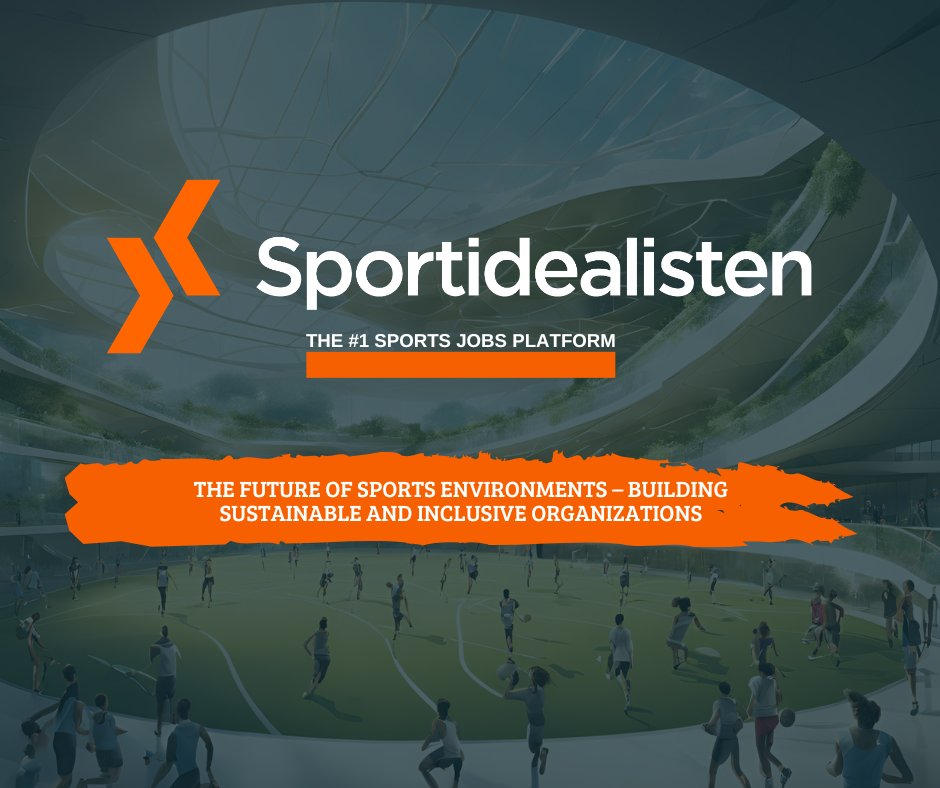Sports organizations play a vital role in shaping communities, fostering inclusivity, and creating long-term sustainability. This article explores how sports clubs can develop thriving environments through strategic planning, community engagement, and modern training methods. Whether you are a club leader, coach, or sports enthusiast, this guide will provide insights and actionable steps to build the future of sports.
Part 1: The Role of Sports in Society – More Than Just a Game
The Broad Impact of Sports
Sports are more than just an activity – they play a central role in societal development. They contribute to physical and mental health, strengthen social bonds, and can serve as a pathway out of exclusion for many young people. According to the Swedish Sports Confederation (RF) Strategy 2025, the goal is to get more people engaged in sports for longer by adapting training and competition formats.
The Responsibility of Sports Clubs
Sports clubs have a unique opportunity not only to develop skilled athletes but also to cultivate responsible citizens. By integrating sports into schools and the broader community, we can create safe environments where young people grow both on and off the field.
Examples of Successful Initiatives:
- IFK Göteborg’s community project to include young people in sports.
- Djurgårdens Fotboll’s youth program, providing more children with access to the game.
- Malmö FF’s “Football for All,” which helps integrate newly arrived immigrants through sports.
Part 2: The Arena – Experiences That Build Engagement
The Magic of Match Day
Experiencing a live match, feeling the atmosphere and sense of community, can foster a lifelong passion for the sport. Djurgårdens Fotboll has successfully achieved this by integrating its youth programs into the senior team environment.
Tips for Building Engagement
- Organize pre-match events where young players can meet senior team members.
- Create mentorship programs linking youth players with senior athletes.
- Utilize social media to engage young people in the club culture.
- Build a strong supporter community through fan clubs and organized tifos.
Part 3: The Training Grounds – A Development Hub for Future Athletes
The Importance of a Good Training Environment
To develop both grassroots and elite sports, training facilities must provide both high-quality training and a safe, inclusive environment. The Swedish Floorball Federation’s Development Model SIU outlines steps for player development that can be applied to training environments.
Key Questions for Clubs
- How do we ensure all young athletes have the opportunity to grow?
- How can we create an inclusive training environment where everyone feels welcome?
- How can we optimize training schedules to maximize both performance and enjoyment?
Examples of Actionable Steps:
- Implement a long-term development plan for youth sports.
- Review facilities and access to training spaces.
- Create inclusive training groups where all skill levels can participate.
Part 4: Schools & Cities – Sports as a Bridge to Society
The Role of Schools in Youth Sports
Collaborating with schools provides sports clubs with a great opportunity to reach more children and young people. A model that has successfully realized this is the Swedish Ski Federation’s Blågula vägen, where school and sports are integrated for a more sustainable development of young athletes.
Effective Initiatives
- Create sports-focused schools where training and academics are combined.
- Partner with municipalities to improve access to sports facilities.
- Use sports as a tool for integration through projects targeting socially vulnerable areas.
- Offer leadership training in schools to encourage students to participate in sports as coaches and referees.
Part 5: The Future of Sports Clubs – How to Build a Sustainable Organization
Strategic Planning for Sports Clubs
Managing a sports club today is about more than organizing practices and games. It’s about building a sustainable organization that can adapt to future challenges.
Key Factors for the Future of Sports
- Utilizing digital tools for administration and training (e.g., digital training platforms and apps).
- Creating financially sustainable models through sponsorships, grants, and alternative revenue streams such as memberships and events.
- Strengthening relationships with the local community by involving parents, businesses, and other stakeholders in the club’s activities.
- Training coaches and leaders to meet future demands for development and inclusion.
Part 6: Action Plan – How Your Club Can Take the Next Step
From Theory to Practice
After reviewing these five sections, it’s time to put ideas into action. Here is a step-by-step guide for clubs looking to develop their operations:
- Identify your strengths and weaknesses within Arena, Training Grounds, and School/City integration.
- Create an action plan with clear goals and assigned responsibilities.
- Establish partnerships with schools, municipalities, and local businesses.
- Measure and evaluate your initiatives to ensure long-term development.
- Build a strong club culture where everyone feels welcome and engaged.





